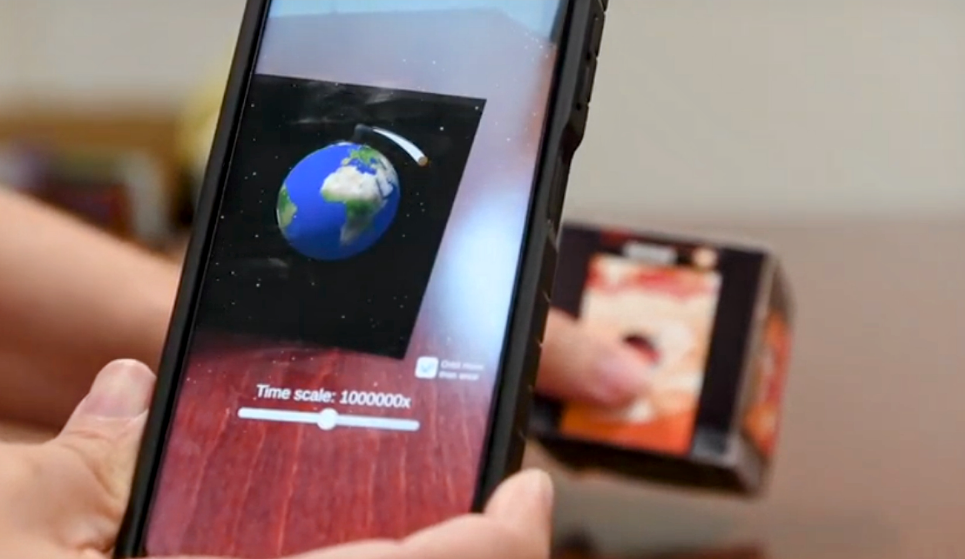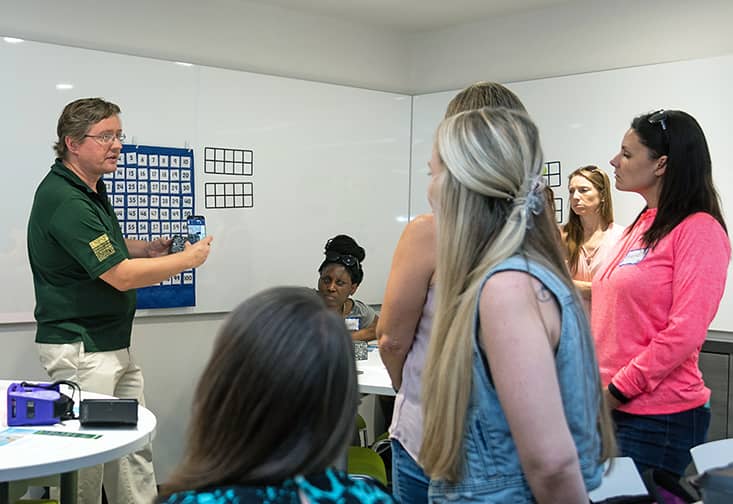Innovate
USF faculty develops augmented reality platform

Realizing that abstract physics concepts are among the most challenging for students to grasp, faculty from the University of South Florida are utilizing augmented reality to ease the learning curve.
Education and physics professors from the St. Petersburg campus are working with developers from the Advanced Visualization Center in Tampa to help students better comprehend complicated theories on subjects like gravity and electromagnetism. A recent $300,000 grant from the National Science Foundation (NSF) is funding the creation of augmented reality (AR) simulations to propel understanding and educational results.
Once completed, USF will offer the platform to other schools and museums at no cost. The team is creating six AR simulations that combine real-world experiences with “highly visual and interactive computer-generated content.”
The six core concepts include magnetic fields, rotational motion, thermodynamics, optics, forces and circuits. David Rosengrant, campus dean of the College of Education at USFSP, told the Catalyst that while there are laws in physics, they apply differently to various aspects, creating confusion.
“Though the underlying concept is the same, it looks on the surface to be different than something we talked about – and we learned,” said Rosengrant, primary investigator for the project. “That transition to, ‘I understand it in this one context’ … to every possible context is a large leap.”

Dr. David Rosengrant (left), campus dean of the College of education on the St. Petersburg campus, is the primary investigator for the project. Photo courtesy of usf.edu.
Rosengrant added that grasping rules that apply differently to various aspects of physics is challenging for students of all levels. He said the AR platform would eliminate some abstract components and transform them into something more tangible or concrete.
Instead of visualizing ideas internally, students will hold and manipulate a cube mapped to a digital screen. They can also change certain parameters of a simulation to see how it alters outcomes.
Rosengrant explained that the educational team – which includes Karina Hensberry, associate professor of mathematics education at USFSP, and Garrett Matthews, associate professor of physics on the Tampa campus – is dictating program parameters to their coding partners at the Visualization Center.
“We’re the ones that are drawing up what it looks like,” said Rosengrant. “This is what I want it to do if you hit this. These are the variables I want to be able to manipulate.”
The team, said Rosengrant, is creating the initial simulations through the NSF’s “Phase 1” funding. If the platform performs as expected, he said they would apply for a $1-$2 million grant in the future.
While Tampa is home to the Advanced Visualization Center, Rosengrant said his primary partner at the facility has ties to St. Pete. He added that the venture is a “great example” of the two campuses collaborating to achieve success, “showing how consolidation is bringing researchers and projects together that may not have happened if we didn’t consolidate.”
Rosengrant noted that most computer simulations still only exist on a monitor. He believes the extra component of holding and manipulating something that will produce desired effects on an electronic device would be enticing to other institutions and venues – like museums or festivals.
He relayed recent discussions with museum officials who hope to incorporate more technological features into exhibits. Although he said they might not use USF’s cube or platform, he believes that people see the value in the ability to manipulate art or artifacts through AR.
Science, technology, engineering and math (STEM) skills, said Rosengrant, apply to much more than just industry-specific jobs. He added that many incorrect ideas on how things work permeate society, and many people – including high school students – will never take physics classes.
He believes innovative tools like the AR platform will help the general public learn about physics concepts and how they integrate into everyday life.
“Like the idea of, if I’m moving to the right, there’s got to be a force moving that way,” said Rosengrant. “That’s an incorrect idea, but we understand why people have it.”
He said the program would take a year to develop. As a federally funded project, any educators could then use the platform for free. USF professors hope to incorporate the augmented reality simulations into physics courses by the Spring 2024 semester.







